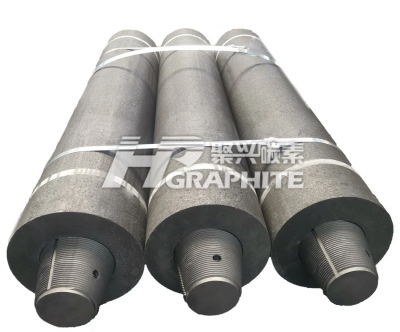"Double carbon" opens the door of graphite electrode industry demands

"Double carbon" opens the door of graphite electrode industry demands
Graphite electrode is the only material with low resistivity and heat resistance gradient in electric arc furnace (EAF). It is mainly made of petroleum or coal series needle coke and coal tar pitch for binder. The main characteristics of graphite electrode production are long production cycle (usually lasting three to five months), high power consumption and complex production process.
From 2016 to 2021, graphite electrode global production except China decreased from about 710,000 metric tons to about 670,000 metric tons, with a CAGR of - 0.9%. In 2021, the production of ultra-high power (UHP) graphite electrode outside China will account for about 90% of the global production of graphite electrode except China. During the period, due to the removal of low-capacity plants, long-term environmental rectification and the re-transformation of low-capacity facilities, which need to upgrade production capacity for a long time, the production capacity outside China decreased, resulting in a continuous decline in production outside China. The gap between the production and consumption of graphite electrode depends on China's export of graphite electrode.
From 2016 to 2021, graphite electrodes global production excluding China decreased from about 710,000 metric tons to about 670,000 metric tons, with a compound annual growth rate of -0.9%. In 2021, the ultra-high power (UHP) graphite electrodes production outside China accounted for about 90% of the world's total production excluding China. During the period, production outside China continued to decline due to the demolition of low-capacity plants, long-term environmental remediation and the long-term upgrading of low-capacity facilities, which resulted in the reduction of capacity outside China. The gap between production and consumption of graphite electrodes relies on China's export of graphite electrodes to fill the gap.
From the perspective of demand, the downstream of graphite electrode includes steel, silicon metal, yellow phosphorus, calcium carbide and other fields, of which steel industry accounts for 50%, which is the largest consumption fields of graphite electrode.

At the end of 2015, China proposed steel supply-side reform. From 2016 to 2018, there was a total reduction of 145 million tons of on-balance sheet capacity. In the first half of 2017, 140 million tons of ground bar steel were eliminated. In recent years, the supply-side reform has achieved remarkable results, and steel plants' profit has been improved. Since 2015, China's crude steel production has continued to account for more than 50% of the world's total output. In 2020, China's crude steel production has increased to 57.68% of the world's total output.
Due to the uneven quality of scrap steel recycling and the weak competitiveness of power cost, China's EAF steelmaking development is slow, and EAF steelmaking proportion is significantly lower than that of foreign developed countries. According to the statistics of the World Iron and Steel Association, China's EAF steel proportion in 2020 was only 9.2%, far below the global average level of about 26%.
Iron and steel industry is one of the important fields for China to achieve the goal of "Carbon neutrality". As an energy-intensive industry, the steel industry is the largest source of carbon emissions among 31 types of manufacturing. In 2019, carbon emissions reached 1.853 billion tons, accounting for 18.92% of the national carbon emissions. In addition to power generation, it is the industry with the highest carbon emissions in the entire industrial production activities. Therefore, the steel industry is one of the main driving forces to achieve the goal of "reaching the peak in 2030 and achieving carbon neutrality in 2060" of China's carbon emissions.
On December 31, 2020, the Ministry of Industry and Information Technology publicly solicited opinions on the "Guidelines on Promoting high-quality Development of the Iron and Steel Industry (Draft)", which proposed that the iron and steel industry should basically form a development pattern with reasonable industrial layout, advanced technology and equipment, outstanding quality and brand, high level of intelligence, strong global competitiveness, and green, low-carbon and sustainable development by 2025. The proportion of EAF steel production in the total crude steel production should be raised to more than 15%, and strive to reach 20%.
In recent years, global crude steel production has maintained stable growth. As steel is widely used in automobile, construction, packaging, railway and other industries, global steel consumption shows a steady growth trend. At the same time, with the improvement of the quality of steel products and the continuous improvement of environmental protection requirements, steel manufacturers have turned their attention to the EAF steelmaking, and put forward higher requirements for the quality of graphite electrode necessary for EAF. Global crude steel production is expected to reach about 2.273 billion metric tons in 2026, with a compound annual growth rate of about 3.1% from 2021 to 2026. In the future, the leading enterprises in the global graphite electrode market will continue to improve the capacity utilization rate as one of the main goals, continue to integrate backward production capacity, optimize production technology, improve production efficiency, and expect to increase the production of UHP graphite electrode. More market demand analysis of graphite electrode, welcome to communicate with us.
No related results found








0 Replies